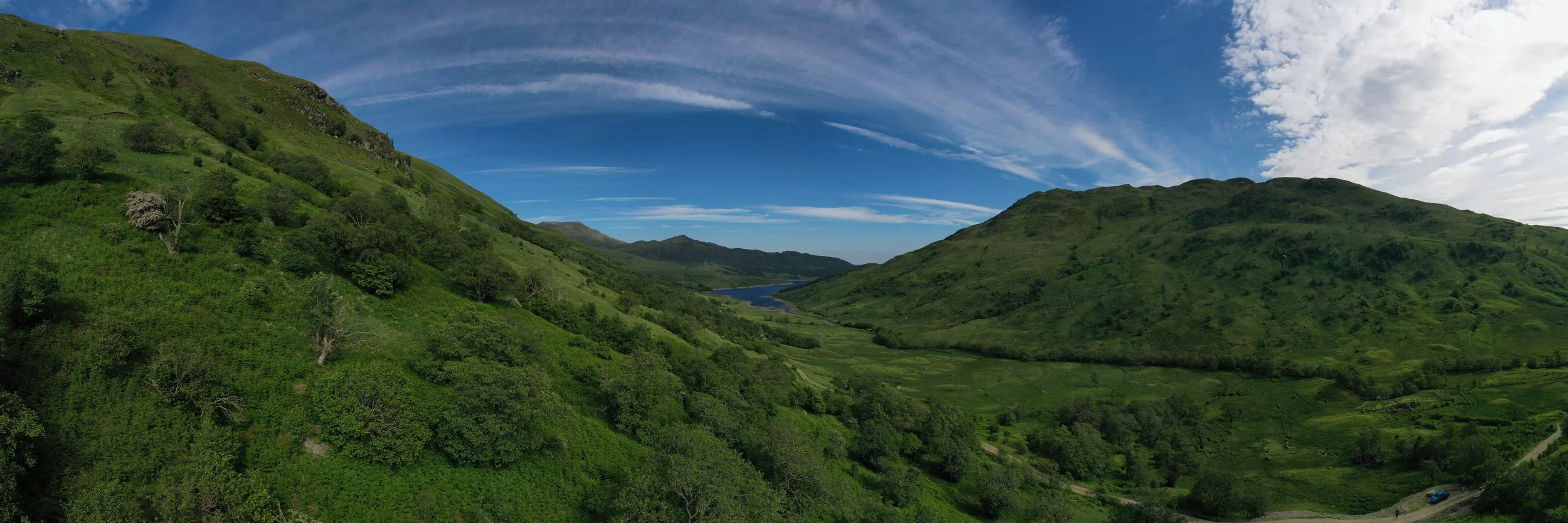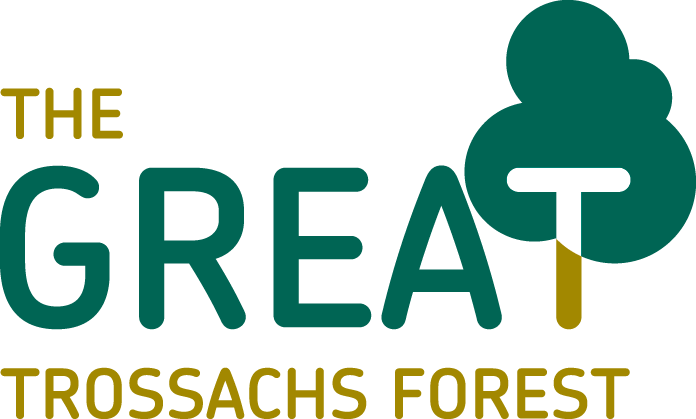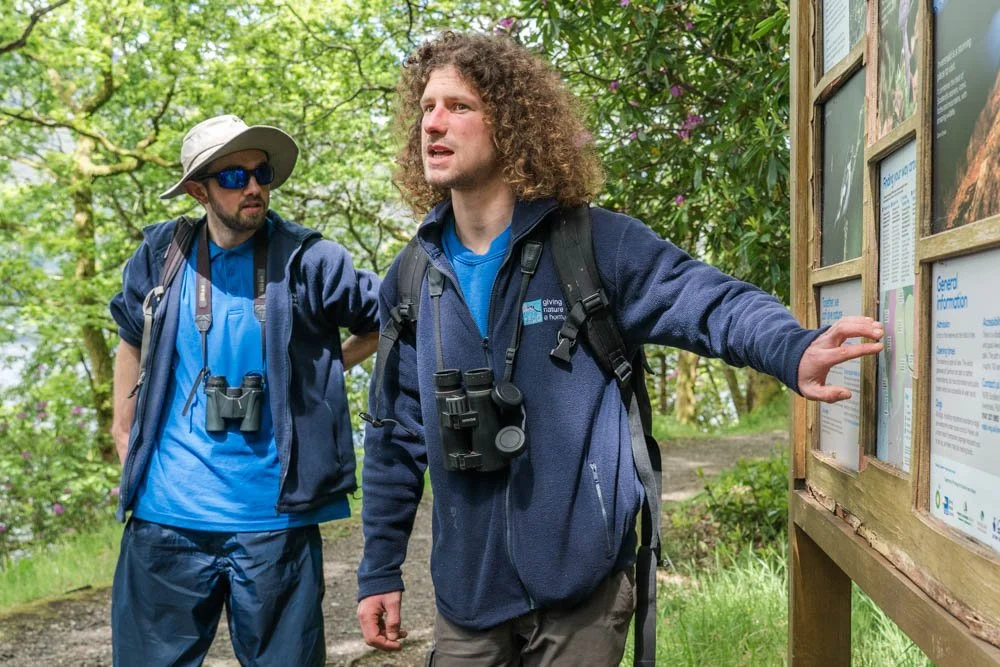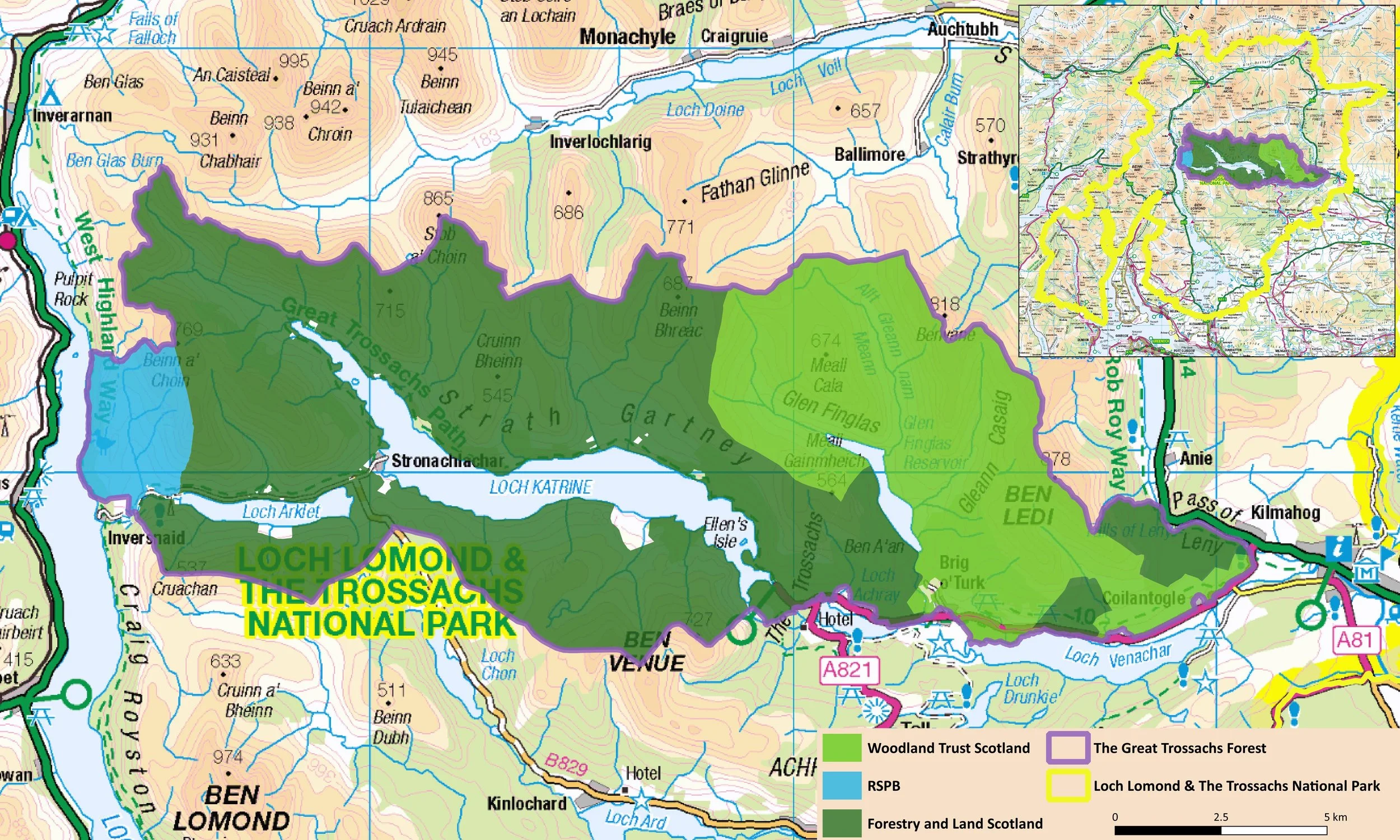
The Great Trossachs Forest Partners
The Great Trossachs Forest is a partnership of three land managers, Woodland Trust Scotland, the Royal Society for the Protection of Birds (RSPB), and Forestry and Land Scotland (FLS), along with Loch Lomond and the Trossachs National Park Authority. The forest spans a vast continuous area of 16,500 hectares from Callander in the east to the shores of Loch Lomond in the west. It is an area steeped in history and famous for its rugged mountains and glistening lochs that are coming alive again as woodland expands up once barren hillsides and breathes new life into empty glens. New species are being recorded, but more importantly the abundance of all life overall is greater.
The Woodland Trust, RSPB and Forestry and Land Scotland came together in 2007, originally under the banner of the Scottish Forest Alliance, with a vision to create and restore a contiguous area managed for the benefit of wildlife and people. It was a groundbreaking collaborative approach that delivered millions of pounds of investment and inspired other collaborative landscape-scale restoration ventures. The Great Trossachs Forest achievements were recognised in 2015 with the award of National Nature Reserve (NNR) status.
Woodland Trust Scotland
Glen Finglas was purchased by the Woodland Trust in 1996 and at 4,875 hectares it is the Trust’s largest site. This thriving landscape with impressive glens, ancient woodland, and high mountain tops is the perfect place to explore. An amazing network of trails weave their way through a rich mosaic of scattered ancient trees, bluebell woods, grassland, heath, and wetland that are home to an abundance of wildlife. Previously, Glen Finglas was one of the largest sheep farms in Europe, but today a much smaller number of hardy Luing cattle are kept for conservation grazing to promote biodiversity and maintain the internationally important upland wood pasture, a feature that Glen Finglas is particularly noted for.
RSPB Scotland
Inversnaid Reserve rises steeply on westerly facing slopes from the shores of Loch Lomond to the summit of Beinn a’ Choin. The Atlantic oak woodland hugging the loch shore is part of Scotland’s rainforest, a unique and endangered habitat characterised by its lichen and moisture laden trees and moss clad boulders. A short but steep trail climbs up from the shore beneath the woodland canopy to give breathtaking views over Loch Lomond and the Arrochar Alps, and in spring these ancient woods are alive with birdsong from scarce breeding species like the wood warbler, redstart, pied flycatcher, and tree pipit. The RSPB have been planting trees and managing for natural regeneration to extend the area of woodland cover to benefit black grouse and connect with neighbouring landowners in The Great Trossachs Forest.
Forestry and Land Scotland
Loch Katrine together with Loch Arklet and the surrounding hills has long been recognised as one of the outstanding scenic areas in Scotland. In addition to providing recreational and scenic value, the lochs are also of vital strategic importance with Loch Katrine being Glasgow’s main source of drinking water. Contamination of the water supply in 2002 was the trigger for the cessation of sheep grazing, and the beginning of The Great Trossachs Forest landscape-scale restoration project. In 2005, Scottish Water agreed a 150-year lease to manage the catchment for biodiversity. Over 1000 hectares of new woodland has been created so far by Forestry and Land Scotland and the next phase will see woodland spread to higher elevations. Loch Katrine is a vast area of wild and rugged terrain where if lucky you may see golden eagles soaring over cliff and moor, pearl-bordered fritillaries flying swiftly through sunny glades, or narrow-headed wood ants busily foraging within ancient woodland.
Loch Lomond & the Trossachs National Park Authority
Loch Lomond and the Trossachs National Park formally joined The Great Trossachs Forest Partnership in 2017 to help support the long-term legacy and delivery of the project. Through the Future Nature Route Map, the National Park is committed to a long-term plan to restore nature at scale and achieve the vision of a resilient nature-rich National Park, where abundant wildlife and a healthy natural environment provide a wealth of benefits through an extensive, well-connected living network. The National Park Authority provides staff support and funding to enable the development and delivery of The Great Trossachs Forest as one of the key landscape scale partnerships at the heart of this vision.




